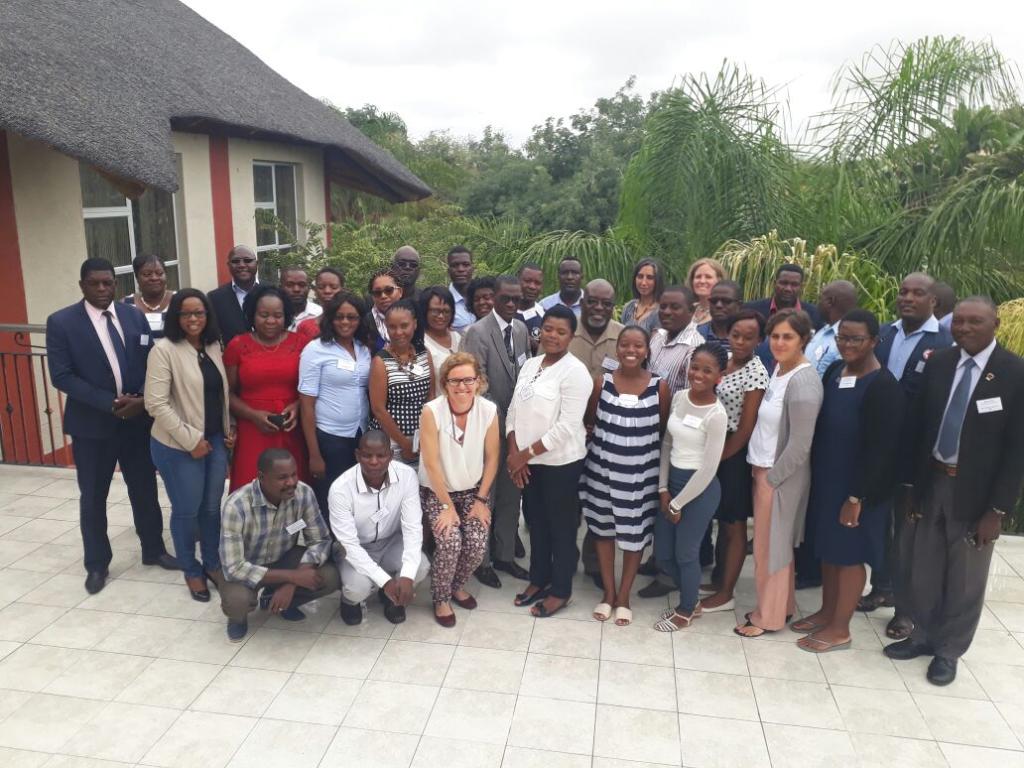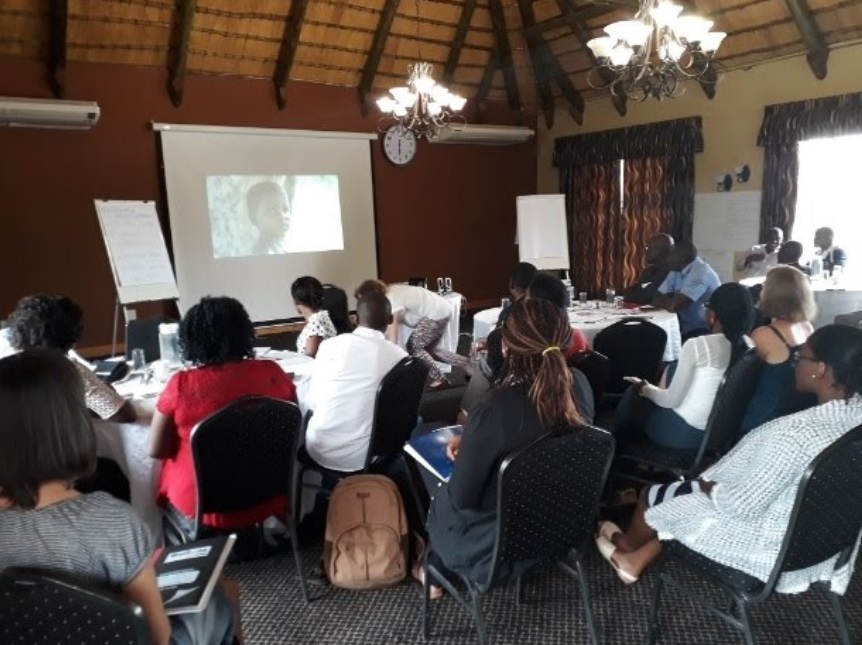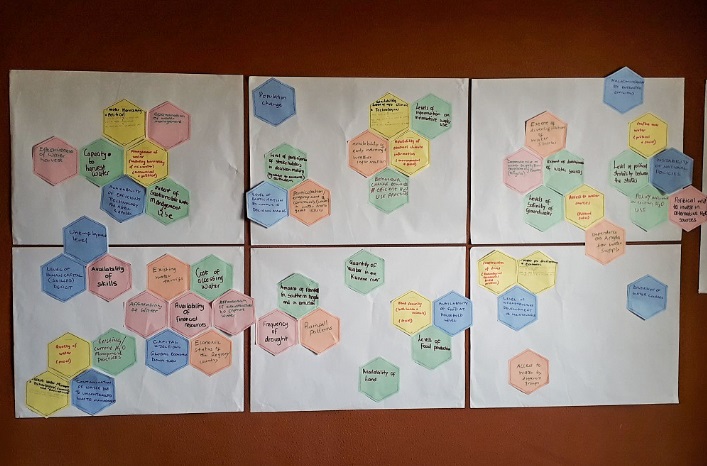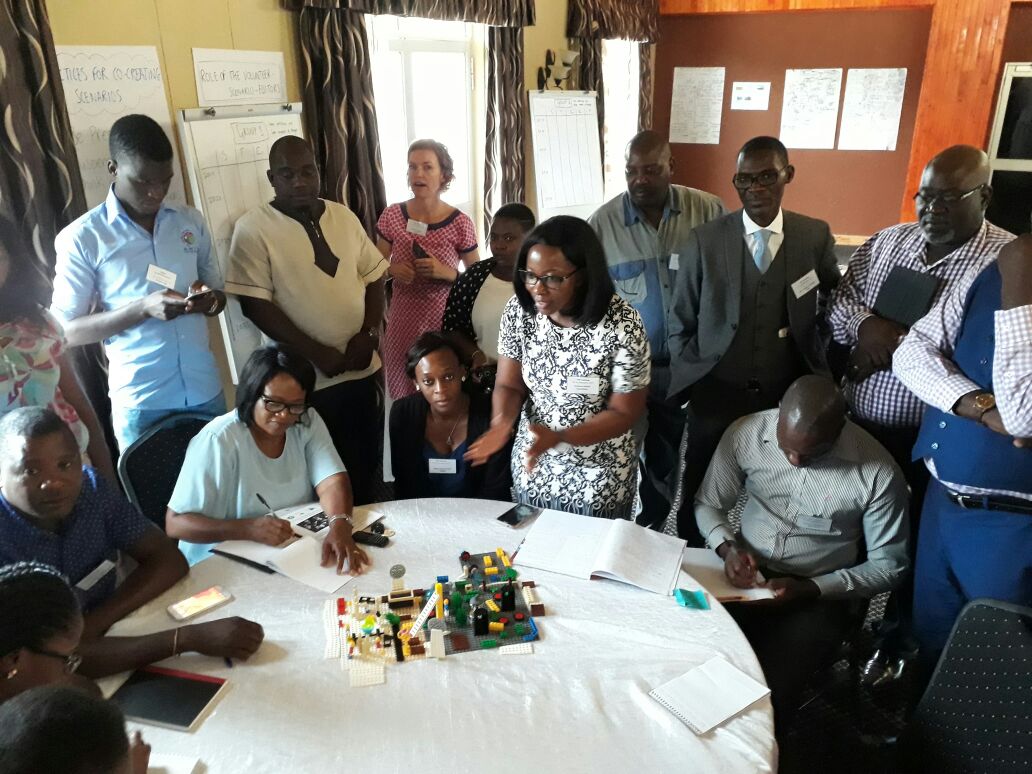The future of water in Namibia: what might it look like, and how can we prepare for it?

By Birgit Ottermann

This diverse group of stakeholders participated in a Transformative Scenario Planning workshop to discuss water security in Namibia's Omusati Region
On 15 and 16 February, stakeholders from a variety of national, regional and local institutions in Namibia, came together at Bennie’s Entertainment Park & Lodge in Ongwediva to discuss the future of water in the Omusati Region, an area in the north of Namibia that is particularly vulnerable to climate change.
This important ASSAR meeting, organised by the universities of Namibia and Cape Town, and Reos Partners, was presented as a ‘Transformative Scenario Planning’ (TSP) workshop - a unique process whereby stakeholders collectively developed four relevant and plausible stories about the future of water for productive use in the Omusati region to 2035.
‘Adapting to an uncertain future’
Reos Partners’ Colleen Magner, who guided and facilitated the two-day workshop, explains:
Scenarios are useful tools for anticipating and adapting to an uncertain, unpredictable future. What is different about TSP is that it enables both adaptive responses to events outside of our control and a transformative response: the possibility that we can change the future, by identifying points for leverage amongst the factors we do have some influence in.
For the first time, representatives from institutions such as the Ministry of Environment and Tourism, Ministry of Agriculture, Water and Forestry, Directorate Disaster Risk Management (Office of the Prime Minister), Namwater, Nampower, the Omusati Regional Council and different farmers associations and traditional authorities sat together in one room to discuss their shared concern for the water crisis and how they could potentially exercise influence to enable better adaptation in the future.
"The TSP workshop evoked a strong desire to address water scarcity and think outside the box among key stakeholders from Omusati," says Margaret Angula, lead researcher of the ASSAR project in Namibia. "The methodology is thought provoking yet practical. Participants from different institutions and governance levels were able to debate on an issue that is of most concern in their region."

Governor of the Omusati Region, Erginus Endjala
‘Unblocking situations that are stuck’
The workshop was opened by the governor of the Omusati Region, Erginus Endjala, who pointed out that transformative scenarios offered a way for diverse stakeholders to together unblock situations that are polarised or stuck:
It is useful when a diverse set of people face a complex challenge that is vital to them, but that they have not been willing or able to work on together. Perhaps because they disagree on the very nature of the problem. This facilitated process combines imagination and rigour,” he said.
“By using both research and practice to address the information shortfall, the primary aim of the ASSAR project is to produce future-focused and societally relevant knowledge of potential pathways to wellbeing through adaptation,” he added.
As is customary in Namibia, the workshop was opened every day with a prayer by Reverend Phillipus Kashima (advisor to the Governor of the Omusati Region). There was also a translator at hand (Veiko Namwoonde, from the University of Namibia) to help clarify complex concepts by translating them into Oshiwambo, the language that is widely spoken in the region.
Launch of ASSAR drought video
The workshop also saw the official launch of ASSAR’s documentary on drought in Namibia’s Omusati Region. This was very well received by the participants - everyone agreed that it was a great introduction to the many challenges the local community is facing.

Workshop participants watch ASSAR’s documentary on drought in the Omusati Region
Brainstorming critical issues
The workshop consisted of numerous teamwork sessions during which participants could express their key concerns and share their different views and opinions. These included questions such as:
When will we start harvesting water?
How can we reduce our dependency on the Kunene River for water?
Where will we get funds to construct dams?
How can we improve the management of water resources and ensure equal access to water?
How will we ensure food security for both humans and livestock?

One of many brainstorming sessions
"When it comes to critical issues, such as water scarcity, we need this type of workshop," comments Peter Muteyauli, Deputy Director: multilateral agreements in the Ministry of Environment and Tourism. "I'm recommending that even the [Namibian] President and all other senior leaders follow this methodology so that problems will be solved faster, sustainably and comprehensively.”
Silvanus Uunona, basin support officer/hydrologist at Cuvelai-Etosha Basin/Ministry of Agriculture, Water and Forestry, agrees that the TSP workshop is a very positive initiative.
" All the main stakeholders of water are represented here and collectively we are far more powerful in addressing the problem and finding possible solutions.”
Michael Shinyata, environmental officer from the Outapi Town Council, says that the TSP method is very helpful in better planning for the future and improving water supply in the region. "It is time that people realise we need to make a plan for proper water harvesting or the construction of dams, otherwise we may run out of water,” he adds.
Identifying key driving forces
Workshop participants identified the key driving forces that might influence the security of water in the Omusati Region. For this exercise, participants looked at a broad spectrum of social, technological, economic, environmental and political factors. These were written down on hexagon-shaped notes and shared on big posters, after which participants had the difficult task of narrowing these down to two key driving forces.
After much discussion, it was agreed that ‘political will’ (to invest in alternative water sources) and ‘impact of drought’ would be the two main driving forces they would work with. These two themes formed the building blocks that the participants would use to construct scenarios of what might happen in the Omusati Region until 2035.


Identifying the key driving forces that might influence the security of water in the Omusati Region
Four scenarios
The stakeholders were divided into four teams, each of which had to imagine a scenario based on a variation on these two main driving forces:
Participants had to to be reminded that they had to construct scenarios of what might happen (using these two driving forces) and not merely on what they believed should or would happen. Each group used flip charts, post-it notes and LEGO building blocks to construct their stories.
The workshop ended with each team presenting their imagined scenarios to the entire workshop group.

Victoria Haikali of NamWater presents her team’s scenario to participants
These stories will now be collated in more detail at a writing workshop in Cape Town, which will be attended by a representative of each scenario group. Each of the scenario writers will also report back to their team members (the various stakeholders in Namibia) to ensure that their imagined scenario is accurately represented.
All stakeholders will attend a final workshop on 5 and 6 July this year, where they will develop strategic responses to the future-of-water scenarios (or stories) that they created in this first workshop.